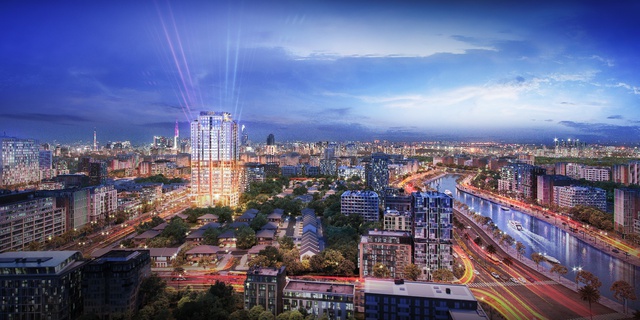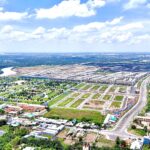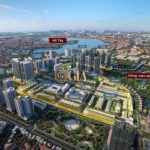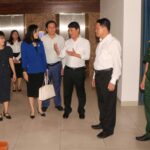This shift reflects not just the expansion of urban spaces but also a change in investment mindset from “riding the wave” to “getting ahead of urban planning.”
Hanoi and Ho Chi Minh City: Selective capital, investing in real value
Hanoi and Ho Chi Minh City remain the two pillars of Vietnam’s real estate market, with improved liquidity trends in Q1 2025. Buyers’ psychology is stabilizing, influenced by flexible monetary policies, more reasonable interest rates, and legal progress in key projects.
According to industry experts, there is still a high demand for real estate, but buyers are becoming more selective. Instead of chasing short-term trends, they are opting for properties with transparent legal status, reputable developers, and well-connected locations.
In Hanoi, short-term speculative capital has significantly decreased, giving way to long-term investment decisions focused on usage value. Popular areas include West West Lake and Cau Giay, which have formed a nucleus of upscale urban areas, as well as peripheral areas such as Dong Anh, Dan Phuong, Hoa Lac High-tech Park, and the Ring Road 4 corridor.
Large-scale projects with well-planned and integrated urban planning, low construction density, and good regional connectivity are attracting attention. An example is the GIA22 subdivision, which offers luxury villas for an elite clientele. Located in the center of West West Lake, an area attracting investment from billion-dollar corporations and financially strong developers, GIA22 comprises 164 villas.
In the northeast of the capital, Vinhomes Global Gate is envisioned as a “10-minute international commercial city” with quick access to Hanoi’s center. Moreover, the upcoming completion of the Tu Lien bridge project will further reduce travel time from the project to the inner city to just 5 minutes.
Another notable project is Hoa Lac Metro City, located in the Hoa Lac High-tech Park area. This large-scale development follows the TOD (Transit-Oriented Development) model and is planned along a future metro line. Adjacent to the Lang – Hoa Lac Highway and about 20km from Hanoi, this project has already been approved for a 1/500 planning adjustment. Even though the official launch is yet to be announced, the market is witnessing a growing demand for low-rise and apartment products within the project. This trend underscores the market’s preference for properties with clear legal status, convenient infrastructure connections, and long-term planning prospects.
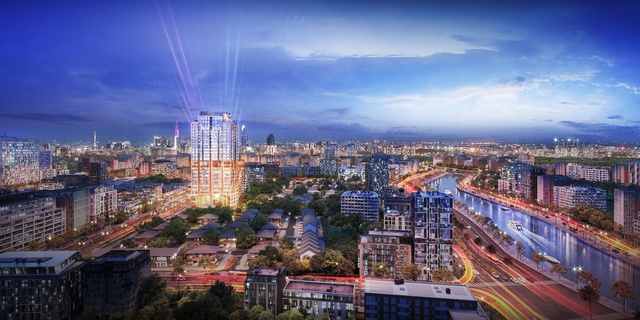
Properties with clear legal status, central locations, and unique positioning are gaining traction in Ho Chi Minh City.
In Ho Chi Minh City, according to Savills’ Q1 2025 market report, the supply of new apartments remained low, with only about 800 units. More than half of the new supply came from subsequent phases of large-scale projects in Thu Duc City and Binh Tan District. Projects launched in the city center were even rarer.
In reality, while housing demand in Ho Chi Minh City remains high, buyers are becoming more discerning in their real estate choices. Kieu by KITA, a grade-A apartment project in the heart of District 5 with clear legal status, is attracting market attention.
Mekong Delta: The new focal point for long-term investment
According to real estate experts, the Southwest region, including Long An, Hau Giang, An Giang, and Can Tho, is witnessing a shift in both housing demand and investment capital outflow from major cities like Ho Chi Minh City and Binh Duong.
This dynamic is driven by accelerating infrastructure development, rapid urbanization, and the region’s increasing importance in national development plans, especially in logistics, high-tech agriculture, and international trade.
Among these provinces, Can Tho stands out as the only municipality directly under the Central Government in the Mekong Delta region. It boasts a unique regional connectivity infrastructure, including the Can Tho International Airport, the Ho Chi Minh City – Trung Luong – My Thuan – Can Tho expressway (with ongoing expansion to Ca Mau), and a well-established network of inland ports and logistics services. These factors not only facilitate regional economic development but also provide strategic advantages for the real estate market.

Can Tho is developing an urban model integrated with aviation and logistics infrastructure.
Additionally, Can Tho is adopting an urban development model integrated with aviation and logistics infrastructure, a strategy that has been successfully employed by several Southeast Asian countries to boost regional growth. The KITA Airport City project is a notable example of an airport-centric urban development model. It integrates various functions, including residential, commercial, service, resort, and logistics areas. The project offers diverse housing forms, such as compound villas, adjacent houses, high-rise apartments, and a commercial complex. With a comprehensive infrastructure plan that includes administrative, cultural, educational, and medical facilities, KITA Airport City showcases a long-term strategic vision for urban development linked to regional connectivity, forming a “new urban hub” in the Mekong Delta.
The fact that developers are no longer merely “following the market wave” but proactively creating new investment destinations by closely following regional planning and infrastructure trends demonstrates a significant maturity in real estate development strategies in this region.
The Heat is On: Land Prices Soar in Southern Districts of Vietnam’s Metropolis
The once-booming real estate market in the eastern district of Ho Chi Minh City is now witnessing a shift. There are signs that the focus is moving southwards, where infrastructure development is receiving a significant boost. This shift in attention to the southern district could potentially ignite a spark in the land parcel segment, creating a new hotspot for real estate transactions.
Purchasing a Villa in Ciputra: Embrace a Luxurious Lifestyle with Flexible Payment Options up to 36 Months
“GIA by KITA, a renowned real estate investor and project developer, has unveiled new sales policies for June 2025. These policies offer attractive payment options for prospective buyers interested in their premium villa offering, GIA22, located in the heart of Tay Ho District, Hanoi. “
The Four Infrastructure Pillars to Reach in 2025 and the Boost for the Real Estate Market
The completion of key infrastructure projects, including the Tan Van Interchange, Ring Road 3, Long Thanh Airport, and the Bien Hoa-Vung Tau Expressway by the end of 2025, is having a profound impact on the real estate market. These developments are reigniting investment flows, particularly in areas with direct links to this new infrastructure.

